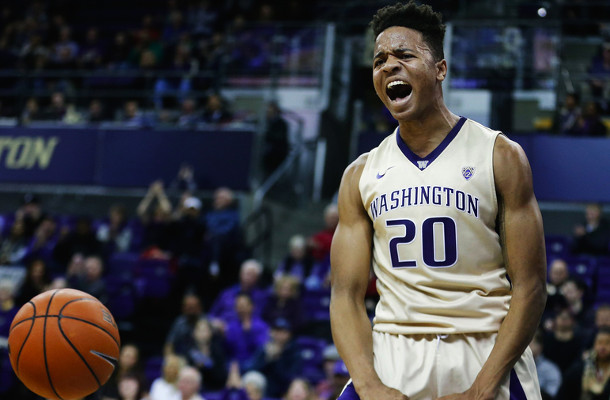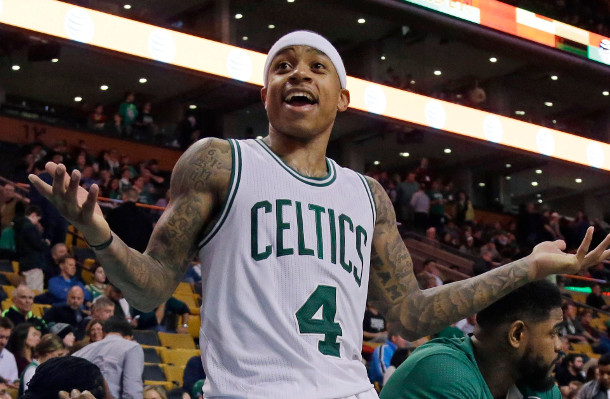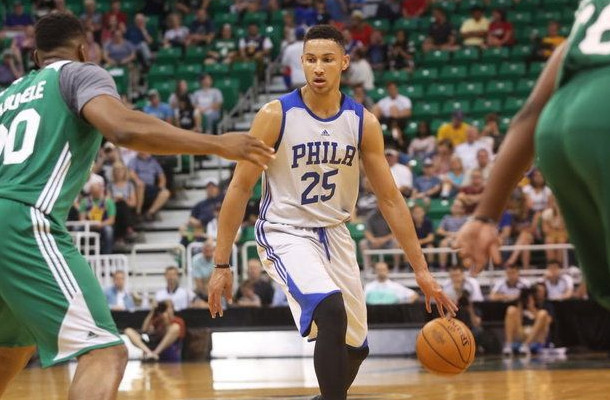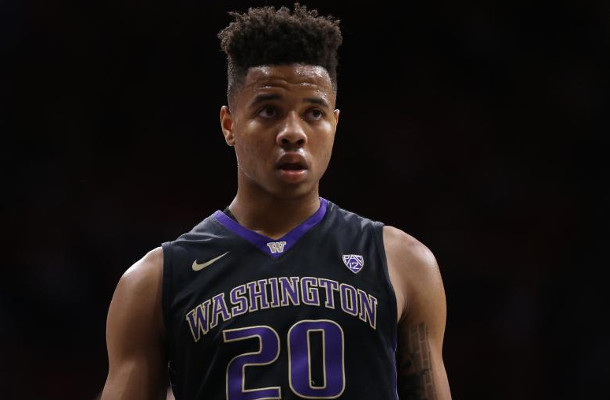Rookie extensions and the problem with max contracts
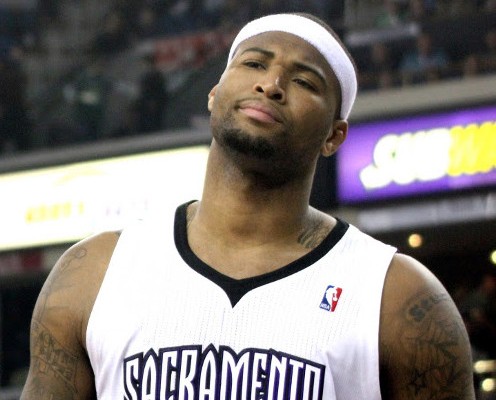
With Paul George and DeMarcus Cousins seemingly in-line to join John Wall as 2010 draftees to be extended early, it points out to one very big problem in the NBA: maximum contracts.
The problem isn’t so much with rookie extensions, as teams are usually fairly reserved giving them out. I’m going to ignore whether or not those 3 are deserving of their contracts. That’s a topic that people who cover those teams can weigh in on. What I’m more interested in is the why. These signings are just what got me going about the absurdity of the “maximum” contract and how it impacts the NBA’s landscape.
The first thing to recognize is that all maximum contracts are not the same. Players with 0-6 years of experience can get 25% of the salary cap, players with 7-9 years of experience can get 30% of the cap, and players with 10+ years of experience can get 35% of the cap. So merely calling a contract a “maximum” contract doesn’t do much to truly represent what we’re talking about.
The problem this presents, besides the increased inherent risk when negotiating that third contract in a players career, is one of fan expectations. A “max contract” carries with it the connotation that the player should be a franchise player. Somebody to build your team around. “Reserved for a top 10 player” is the argument I frequently hear.
But it’s really not. Many of these players coming off rookie contracts that get “maximum” contract extensions / offers would be the second or even third highest paid players on contenders. In that context, they’re not paid like franchise players at all, regardless of the short name frequently given to these types of deals.
Now, there’s an inherent risk in tying up money when you don’t yet have that star player in place, and paying somebody a maximum contract if it limits your flexibility to obtain the Batman to be his Robin can be a dicey proposition. But this comes down to talent evaluation and salary cap management and doesn’t make the maximum contract necessarily bad: it just has to be given out in the right place at the right time for the right player.
What makes this especially tricky is structure the league has setup.
The problem starts at the fact that maximum contracts are artificially limited by the NBA in their own wonderful version of rent control. The biggest impact of this is that the true stars of the league get chronically underpaid. If allowed to offer any salary they wanted, teams with cap space would be more than willing to give LeBron James more than the $19 million he is currently getting from the Miami Heat. But, by limiting the maximum a team is allowed to offer, the league limits the impact money has as a deciding factor when these stars make their decisions. With money now equal for all teams having enough cap space (or bird rights) to offer it, a stars decision becomes more about destination.
A star coming off of his rookie contract is almost always going to re-sign because of the restricted free agency rules. A now-veteran star 9 years into his career may leave, but he’s not going to leave for a mediocre team with cap space, and multiple teams are going to be willing to offer him the artificially-low “maximum” contract. So in order to attract a star in free agency, you have to be a destination.
This causes one big series of cause and effect.
In order to be able to attract a star in free agency, you have to be a destination, and the best way to become a destination is to draft and develop a superstar. If it works out, the system provides the team drafting the player with considerable advantages. The artificially limited maximum contract makes it easier to add surrounding pieces and build your foundation, and the restricted free agency rules virtually guarantee your ability to retain the superstar for the majority of their physical prime. At this point, you control your own destiny, at least as much as one can reasonably hope with a sports team.
Second, it causes teams without superstars to to overpay borderline stars. Guys who have no real hope to be franchise guys, who may not even be all-stars, but because teams have to make an impact with their cap space these quasi-stars get bid up until they reach the maximum contract.
This then creates a chain reaction. With other teams willing to pay more for quasi-stars, teams are now forced to pay more to retain their home grown talent. Losing somebody like John Wall would be devastating to the Wizards organization, even if he’s not necessarily produced all that many wins for them yet. So they lock them up early. All it takes is one team, after all, to bid up even a malcontent like DeMarcus Cousins.
And now with the changes in the latest collective bargaining agreement, restricted free agents can only be in limbo for up to three days as their previous team decides whether to match. In the past, with teams having 7 days to decide whether or not to match, bidding teams would get concerned with tying up their cap space for 7 days while other are free agent options are signing elsewhere. Now bidding clubs are less concerned about submitting an offer and one of the major leverage points teams had to get their restricted free agents at a bargain price has been removed.
So you have teams with piles of cap space, but with no real chance of luring a franchise player in free agency. Now with submitting a bid to a restricted free agent not as risky, teams are now more willing to overspend on second tier stars to make an impact, driving up the players bargaining power, and consequently their price.
The best value in the NBA is a superstar on their rookie contract. With even the #1 pick getting below the non-taxpayer mid-level exception, those generational type talents that come into the league give their new teams incredible flexibility to add pieces around them. It makes sense, because of how much even the top end of the draft is a risk and can end up as a sunk coast, but for those that do work out it affords teams an incredible competitive advantage.
The superstar coming off of his rookie contract is the second best deal in the NBA. By this time, their talent has yielded way to production and teams are starting to see the fruits of their investment in the win/loss column. The NBA severely limits their negotiating power with restricted free agency, killing their ability to find other suitors. They then place the harshest earning restrictions on players who are in their physical prime.
This system is curious, to say the least. A players most productive years are typically during that second contract, the one he gets after his rookie scale contract ends, covering years 5-9 of his career. This is when a player is still in his physical peak, but also has the experience and time to hone his skills and get the most out of his athletic gifts. By capping their earnings at 25%, you’re getting the superstar at a huge discount during his most productive years, only to see them get their big bucks during their third contract at a time when their bodies may be on the precipice of physically breaking down, creating a contract that is usually awarded for past performance rather than future results. Even for players who are still producing at their peak level outputs when they sign their third contract, the physical toll of playing 10+ NBA seasons tends to eventually diminish the return just as they start earning the most.
Below is a table on Dwyane Wade. This takes a look at cost per win share produced.
| Year | Salary | Win Shares | $ per Win Share |
|---|---|---|---|
| 2003-04 | $2,636,400 | 4.6 | $573,130 |
| 2004-05 | $2,834,160 | 11.0 | $257,650 |
| 2005-06 | $3,031,920 | 14.4 | $210,550 |
| 2006-07 | $3,841,443 | 8.8 | $436,527 |
| 2007-08 | $13,041,250 | 3.3 | $3,951,893 |
| 2008-09 | $14,410,581 | 14.7 | $980,311 |
| 2009-10 | $15,779,912 | 13.0 | $1,213,839 |
| 2010-11 | $14,200,000 | 12.8 | $1,109,375 |
| 2011-12 | $15,691,000 | 7.7 | $2,037,792 |
| 2012-13 | $17,182,000 | 9.6 | $1,789,791 |
Now, Wade is a bit of an outlier, as the Big 3 all took less than the max they could have gotten back in 2010. By the same token, the amount of wins they produced took a dip because of the level of talent they played around.
The first year of Wade’s second contract was a bit of an aberration due to Wade’s injury, but the second, third, and fourth seasons of his second deal were still excellent values. With Wade having an early-termination contract after this upcoming season, the real decision on how much can be expected of him to produce going forward will be the tough one. Wade’s contract continues to escalate, maxing out at nearly $22 million in 2015-2016, if he doesn’t exercise his early-termination option for 2014-15 and if he does exercise his player option for 2015-16.
However, it’s those quasi-stars where the second contract sometimes becomes questionable. Guys like Joe Johnson. Guys clearly talented, productive members of your basketball team. Guys who may not be stars, but teams are willing to use a maximum salary deal to try to pry away and who would substantially impact your basketball team if you lost.
| Year | Salary | Win Shares | $ per Win Share |
|---|---|---|---|
| 2001-02 | $1,608,840 | 3.0 | $536,280 |
| 2002-03 | $1,729,560 | 2.8 | $617,700 |
| 2003-04 | $1,850,160 | 3.3 | $560,654 |
| 2004-05 | $2,358,954 | 7.6 | $310,388 |
| 2005-06 | $12,000,000 | 6.0 | $2,000,000 |
| 2006-07 | $12,744,189 | 5.1 | $2,498,860 |
| 2007-08 | $13,488,377 | 7.0 | $1,926,911 |
| 2008-09 | $14,232,567 | 7.6 | $1,872,706 |
| 2009-10 | $14,976,754 | 8.4 | $1,782,946 |
| 2010-11 | $16,324,500 | 4.2 | $3,886,785 |
| 2011-12 | $18,038,573 | 6.4 | $2,818,527 |
| 2012-13 | $19,752,645 | 5.1 | $3,873,067 |
Johnson went from “incredible bargain” to “cap unfriendly” virtually overnight, never with any real hope of being worth his contract. His first years of his second contract cost more per win share than the worst (non-injury) years of Dwyane Wade, and the third contract he signed is simply frightening, a decision based on past play that becomes an absolute killer once mother time starts winning and his performance inevitably started deteriorating.
But this is the system that the NBA has setup. Teams are virtually guaranteed of retaining their stars through their prime years, with the first 4 years coming at absolute bargains and the players highest earning potential not until after they have passed their physical prime. And, with good, quasi-stars usually helping their teams stay competitive during the lifespan of their second NBA contract, teams feel compelled to re-sign them to their 3rd contract, frequently to disastrous results.
That limitation based on experience helps teams extending rookie contracts limit their damages somewhat, but the crux of the problem remains the same: with NBA limiting the amount true superstars can earn, they artificially inflate the value of quasi-stars. The second contract for these players is usually manageable, even if somewhat of a burden. The third?
Good luck.
Related Posts
-
PhillyFastBreak


